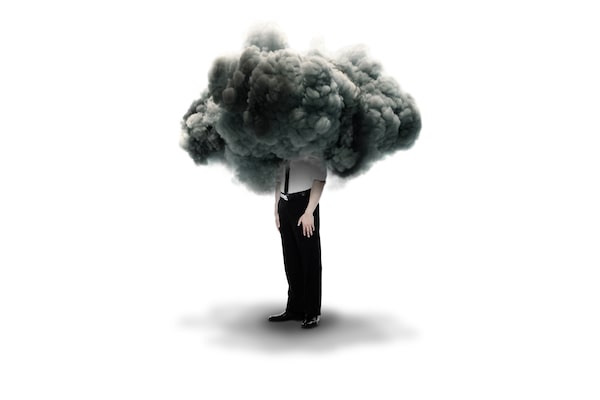
Photo illustration by The Globe and Mail/Source: Getty Images
Anyone taking the pulse of the economy right now has plenty of reasons to feel optimistic. The COVID-19 pandemic appears to be under control, the Canadian and U.S. economies are still expanding (albeit haltingly), household balance sheets are relatively sound, and unemployment has never been lower.
Yet, those choosing to see the economic bright side these days are a rapidly vanishing breed. Suddenly, the word “recession” is being tossed around by economists, business leaders, politicians and workers alike. Over the past two weeks, an unrelenting stream of high-profile names have joined the grim chorus, including top banking execs such as JPMorgan Chase’s Jamie Dimon, billionaire chief executives including Elon Musk and global institution heads like World Bank President David Malpass.
Even Grammy-winning rapper Cardi B chimed in earlier this week, tweeting: “When y’all think they going to announce that we going into a recession?”
Now bearish market watchers who were warning of a downturn as other forecasters ratcheted up their outlooks are finding the mood of the market is starting to match their voices – stock markets are flirting with bear-market territory, and American consumer confidence is plumbing depths not seen in half a century.
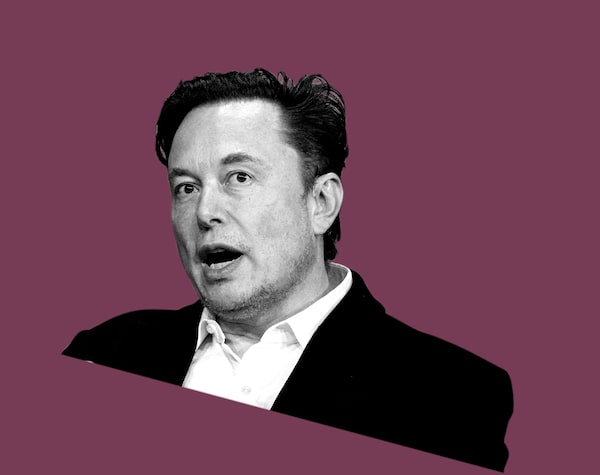
Elon Musk is the latest high-profile name to join a grim chorus.RYAN LASH/AFP via Getty Images
And many bears think everyone else is still far too optimistic. “I hear everybody saying the recession is now a next-year story, but I’m saying the next-year story is going to be about the rebirth of the recovery,” says David Rosenberg, chief economist at Toronto-based Rosenberg Research and a self-proclaimed “maverick” contrarian. “I think the recession is already staring us in the face.”
Super-bad feeling
— Elon Musk on the economy
With the distorted sense of time brought on by COVID-19, it’s easy to forget that less than a year ago, some were waxing hopeful about a postpandemic economic boom to rival the Roaring Twenties, a decade popularly remembered for its prosperity and hedonism on the heels of the First World War and Spanish Flu pandemic. As vaccines rolled out last year and lockdowns lifted, headlines blared the coming “new Roaring Twenties,” with comedian Bill Maher joking, “Let’s do it this time without a depression at the end.”
Such hopefulness for the immediate future has largely evaporated. Social unrest, punishing price spirals for food and gasoline, and the spectre of a new cold war sparked by Russia’s Ukraine invasion have instead rekindled memories of the 1970s, a decade that gave birth to the toxic mix of low growth and fast-rising prices known as stagflation.
Cars line up in two directions at a gas station in New York City, on Dec. 23, 1973. Canada is leaning towards a new era of 1970's-style stagflation as the pace of economic growth slows yet prices remain stubbornly high, economists say.Marty Lederhandler/The Associated Press
More immediate than that, though, economists and investors have been spooked by the resolve with which central bankers have sworn to tackle high inflation, ratcheting up interest rates and shrinking their bloated balance sheets.
The U.S. Federal Reserve has announced the most aggressive cycle of monetary tightening since former Fed chairman Paul Volcker nearly doubled interest rates in the 1980s, to 20 per cent, to crush runaway inflation.
Meanwhile, as recently as last month, the Bank of Canada was emphasizing that future rate hikes might be conditional on how the housing market responds. In a mid-May speech, deputy governor Toni Gravelle said “a larger-than-expected slowdown” in the housing market, amplified by the staggering debt loads being carried by Canadian households, “might lead us to pause” rate hikes once they enter the bank’s neutral range of 2 per cent to 3 per cent.
If homebuyers and homeowners took that as a wink-wink signal of an implied floor under house prices, a speech by Mr. Gravelle’s fellow deputy Paul Beaudry earlier this month put that to rest. Without mentioning the housing market once, Mr. Beaudry noted an annual inflation rate of just 5 per cent (it’s currently 6.8 per cent) robs Canadians of $2,000 a year and said inflation expectations are at risk of becoming unanchored. If workers, consumers and business leaders start to think prices will keep going up, he warned, high inflation can become entrenched. “We must – and we will – be resolute in bringing inflation back down.”
There’s a goldilocks-style view of how the coming months will unfold. It holds that central banks can nudge their levers just enough to find the sweet spot where the economy is neither overheating nor contracting – where wages, job growth and consumer prices ease without crippling corporate profits or spooking the so-called animal spirits – thus bringing about a “softish landing” for the economy, as U.S. Federal Reserve chair Jerome Powell put it.
The problem is, fewer and fewer people seem to believe that’s possible.
In a note this week, Stephen Brown, senior Canadian economist for Capital Economics, wrote that the Bank of Canada now appears “unfazed” by a recent tumble in home sales and “leaves us concerned that it will take a more aggressive approach to policy tightening than is ultimately required, driving house prices sharply lower and risking a major recession.”
Against this backdrop, the question becomes whether the world’s bad mood will feed on itself. After all, economic activity is often a lagging indicator to sentiment. And while feelings of gloom are more acute in the U.S., that still has a spillover effect in Canada, both directly, through our close trade ties, and psychologically, as consumers here absorb America’s more intense feelings of misery.
I said there’s storm clouds but I’m going to change it. It’s a hurricane. You’d better brace yourself.
— Jamie Dimon, CEO of JPMorgan Chase
The longest bull market in history – which kicked off in 2009 after the Great Recession and which was only interrupted for a few brief months when the entire global economy was put on life support in early 2020 – has not been kind to bears. Investors with a pessimistic outlook and a belief that gravity would eventually pull valuations down from the cosmos were repeatedly left nursing bruised portfolios and battered reputations.
In fact, the past year has seen several famously dour investors call it quits. In November, British hedge fund manager Russell Clark wound down his RC Global Fund after a 10-year wrong-way bet against the bull market. Gabe Plotkin shut down Melvin Capital in May after his bearish wagers against so-called meme stocks – money-losers such as video-game retailer GameStop Corp. and theatre chain AMC Entertainment Holdings Inc. that became speculative darlings during the pandemic – went off the rails.
Others bears held on and are now being rewarded as the gloom spreads.
Crispin Odey, another Britain-based investor who oversees the Odey European Inc. hedge fund, has generated a return of 110 per cent this year thanks to his bets that stock prices would fall, erasing six years of losses. “I have the ability to remain in an uncomfortable place for an uncomfortable amount of time,” he told Bloomberg this week. “It is difficult to be a contrarian. You are wrong when you are early, and you make your money very quickly when you are right. It is a bad business structure, and that is why we are rare beasts.”
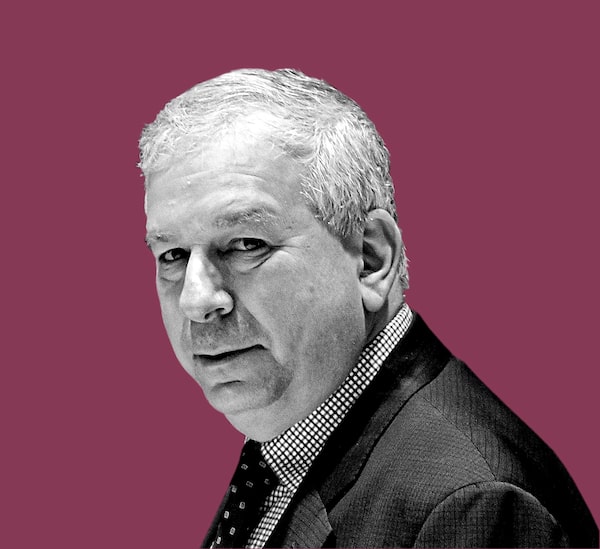
David Rosenberg is chief economist at Toronto-based Rosenberg Research and a self-proclaimed 'maverick' contrarian.Christopher Katsarov/The Globe and Mail
Being a bear can indeed be lonely, says Mr. Rosenberg. “The typical economist always feels the necessity to provide a view that’s filled with roses, tulips and violets,” he says, while noting his firm’s own clients don’t always appreciate his downbeat analysis. “It’s amazing that if you talk to clients and discuss the R word, it’s almost as if you’re saying their kid is ugly.”
While bears all share a dismal view of markets and the economy right now, their belief in how everything will come undone tends to differ, particularly when it comes to inflation.
One camp sees the economy on the brink of outright deflation, brought on by a recession caused by central bankers’ tightening policies.
Mr. Rosenberg is one of that camp’s most high-profile proponents. Having foreseen the collapse of the U.S. housing market in the mid-2000s while working as Merrill Lynch’s chief North American economist, he has consistently argued from the moment inflation anxiety took hold last year that prices for goods and services were going to tumble.
Even without central bank intervention, he sees inflation turning to deflation, arguing that with governments pulling back on fiscal stimulus the remaining driver of inflation will be supply disruptions, and the barrage of shocks – Omicron, Russia’s invasion of Ukraine and widespread lockdowns of Chinese cities and ports – are unlikely to be repeated.
While Mr. Rosenberg has yet to be proven right with his deflation call, his warning that the Federal Reserve could break the back of the U.S. economy with its rate hikes has become more mainstream. “The Fed has had its thumbprints on 11 recessions since 1950 and only achieved soft landings 20 per cent of the time,” Mr. Rosenberg says. “All I know is what history teaches me, which is that inflation melts in a recession.”
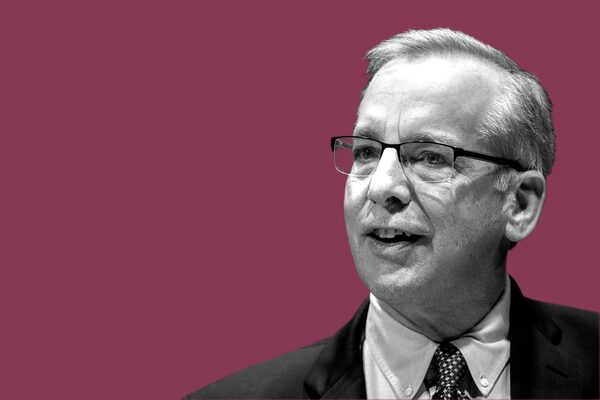
Bill Dudley, former President of the Federal Reserve Bank of New York.Pool/Reuters
”A hard landing is virtually inevitable.”
— Bill Dudley, former president of the Federal Reserve Bank of New York
There’s another camp of bears who believe high inflation will become a lingering problem, even as they foresee a sharper market crash and recession on the horizon. Jeremy Grantham, a prominent value investor and co-founder of Boston money manager GMO LLC, is among them.
In January, Mr. Grantham warned the U.S. was in its “fourth super-bubble” of the modern era, with the previous three being equity bubbles in 1929 and 2000, and the housing bubble in 2006. “At the peak of a bubble, no one wants to hear the bear case,” he says. “People always believe the economy is in fabulous shape and is basically indestructible, and of course in none of the cases has that ever turned out to be true.”
While Mr. Grantham points out the S&P 500 index in the first four months of this year suffered its biggest decline “since I was one year old in 1939,″ he says he wouldn’t feel vindicated in his call if markets stabilized at current levels. (The S&P 500 index is up 5.5 per cent from its 52-week low in May, while the Nasdaq has recovered 6.5 per cent – though both indexes have fallen sharply in recent days.)
That’s because Mr. Grantham sees a much steeper drop ahead, in line with what occurred after the dot-com bubble burst in 2000. In that crash, the S&P 500 was cut in half, while the tech-heavy Nasdaq plunged 75 per cent. “This period is eerily like 2000,” he says.
Mr. Grantham also predicts a recession will hit the U.S. economy in the next 12 months. “If you break the psychological bubble, you get a recession,” he says. Even so, after a temporary slowdown in inflation, he sees price pressures picking up again because of structural factors such as limitations in the supply of labour and resource scarcity. “You have fewer workers, which is inflationary, and shortages of energy, metals and food, which is inflationary, and so the recession will phase into longer-term stagflationary forces that we lived through for quite a long time in the 1970s and 1980s.”
Even the World Bank’s Mr. Malpass, in the organization’s latest Global Economic Prospects report released this week, warned that whether a recession occurs or not, “the pain of stagflation could persist for several years.” (All told, the word “stagflation” appears 75 times in the World Bank report.)
For each of these grim viewpoints, there are, of course, many who take the opposing position. Analysts at U.S. investment bank Goldman Sachs this week pointed to signs that economic output continues to expand, even if the “near-term recession risk has increased in a mechanical sense.”
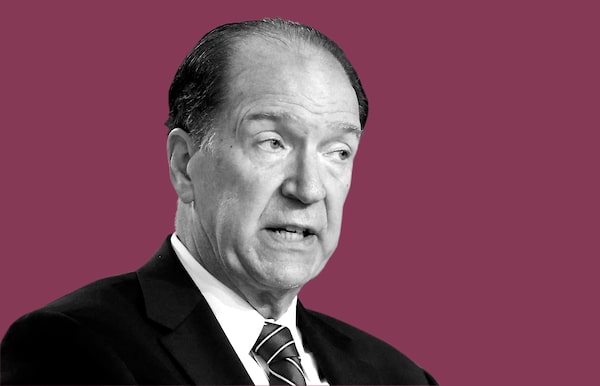
World Bank President David Malpass warned that the pain of stagflation could persist for several years.Yves Herman/Reuters
Meanwhile, Canada’s Big Bank CEOs were cautiously optimistic when they reported second-quarter results last month. “Markets are struggling to predict how we land the economy,” Royal Bank of Canada chief executive Dave McKay said in a call with investors. “Do we land it with a slight recession? Our message today is it could go either way. It’s 50-50. However … we believe the key ingredients are in place to help mitigate any sustained slowdown.” Mr. McKay highlighted low unemployment, rising wages and elevated liquidity as keys to avoiding a recession.
Yet as any bear will tell you, wages and the job market are lagging indicators. And with the mood of investors and consumers souring by the day, the worry now is that feelings of gloom about the economy are becoming a self-fulfilling prophecy.
The world economy is again in danger. … Even if a global recession is averted, the pain of stagflation could persist for several years.
— David Malpass, World Bank President
The world has every right to feel dour. Those early predictions of another Roaring Twenties were rooted in an assumption shared by many during the height of the pandemic that an awful moment in time was about to come to an end, that the world would return to normal.
Last May, that sentiment was captured, of all places, in a viral gum commercial. In the spot (which Adweek saw as tapping into the world’s desire for a “euphoric release”) comically dishevelled workers cast off their Zoom-dominated lives, pour into the streets, break down doors to return to their offices and make out with strangers in a park.
Unfortunately, normal has yet to return. Instead, we got Omicron, supply chain bottlenecks that have made it impossible to buy a car or stove, rising prices for food and gas, a war in Europe accompanied by nuclear sabre-rattling, even higher food and gas prices, severe lockdowns in China, and still higher food and gas prices.
As it turns out, last spring – as that gum commercial was making the rounds – marked the high point of the postpandemic mood. Within a month, the University of Michigan’s consumer sentiment index, the longest-running gauge of consumer confidence in the U.S., topped out before going into free fall. It was also roughly the moment when inflation rates blasted past the 2-per-cent target central banks strive to maintain.
It’s worth remembering that the economic stories in Canada and the U.S. share a lot of similarities, but key differences, too. For one thing, inflation sticker shock isn’t quite as severe here – at least not yet. The Canadian consumer price index rose by 6.8 per cent in April from the year before, compared with 8.6 per cent in the U.S. in May.
At the same time, Canada’s benchmark stock index, the resource-heavy S&P/TSX Composite, has held up relatively well at a time of rising commodity prices. The index is down just 6.5 per cent from its 52-week high, compared with a drop of 16 per cent for the S&P 500. At one point, the U.S. benchmark was down by 25 per cent, briefly putting it in bear-market territory.
As a result, the Canadian decline in consumer confidence has been less acute than south of the border. But aside from the old adage “when the U.S. sneezes, Canada catches a cold,” bears like Mr. Rosenberg also point to what they consider one of the world’s largest housing bubbles as a sign Canada is dangerously exposed to rising interest rates. A drop in house prices would have a profound impact on the psychology of Canadian consumers, he argues, with the “wealth effect” that has driven rising levels of consumption over the past two decades sliding into reverse.

Michael Harnett, Bank of America's chief investment strategistHandout
”’Inflation shock’ worsening, ‘rates shock’ just beginning, ‘recession shock’ coming.”
— BofA chief investment strategist Michael Hartnett
Amid the gloom, those who study the interplay between sentiment and the economy see the risk of a feedback loop forming. “How people feel today will drive the decisions they make economically,” says Peter Atwater, an adjunct professor of economics at the College of William & Mary, who sees falling consumer confidence as a rising sense of vulnerability. “Inflation is not economic, it’s psychological, and it creates feelings of scarcity that weigh heavily on people’s feelings of certainty and control.” That, in turn, can translate into a pullback in spending, which stokes yet more fears.
This is also a moment for investors to remind themselves not to panic, says Lisa Kramer, a professor at the University of Toronto’s Rotman School of Management who studies the interplay between human emotion and markets. “Fear doesn’t drive good decision making,” she says. “If you look at your portfolio every day or multiple times a day, it will just look more volatile.” With that in mind, Prof. Kramer has started to minimize her consumption of market and economic news. (In other words, read this story, but then step away from the screen.)
Could all the recession talk actually be a sign we’re reaching a bottom? After all, when even Cardi B is weighing in on the business cycle, surely that means pessimism is reaching a saturation point. Perhaps, says Mr. Atwater, but the mood in markets still feels more like “impatience rather than capitulation.” For his part, Mr. Grantham argues a bottom won’t come until investors are “terrified” to own stocks.
The bears, meanwhile, continue to accumulate data points they say prove their case: inventory pileups at retailers, weakening corporate profit outlooks, plunging auto sales. And as of Friday, the mood in America reached a devastating new low: The University of Michigan’s consumer sentiment index fell to 50.8, a level not seen since the gauge was created in the 1950s.
For 46 of those years, until last month, Richard Curtin served as the consumer survey’s director. He took on the job amid one era of rising inflation and geopolitical uncertainty, and now he’s leaving in another.
The good news, he argues, is that consumers are in much better shape financially than they were in the 1980s, having rebuilt their savings during the pandemic. “This is only a pale reflection of the kind of horrendous pain households went through in the early 1980s,” he says. Back then, inflation hit nearly 15 per cent, and massive rate hikes brought on a recession that pushed unemployment to nearly 11 per cent.
But as the U.S. Federal Reserve tries to lower demand, Mr. Curtin believes the outside forces pushing up food and gasoline prices will remain, resulting in a stew of wilting economic activity and rising prices. “If I had to pick the most likely result of all this, it would be stagflation, with a falling job market and uncomfortably high inflation.”
A bear might say he told you so.
Your time is valuable. Have the Top Business Headlines newsletter conveniently delivered to your inbox in the morning or evening. Sign up today.
 Jason Kirby
Jason Kirby